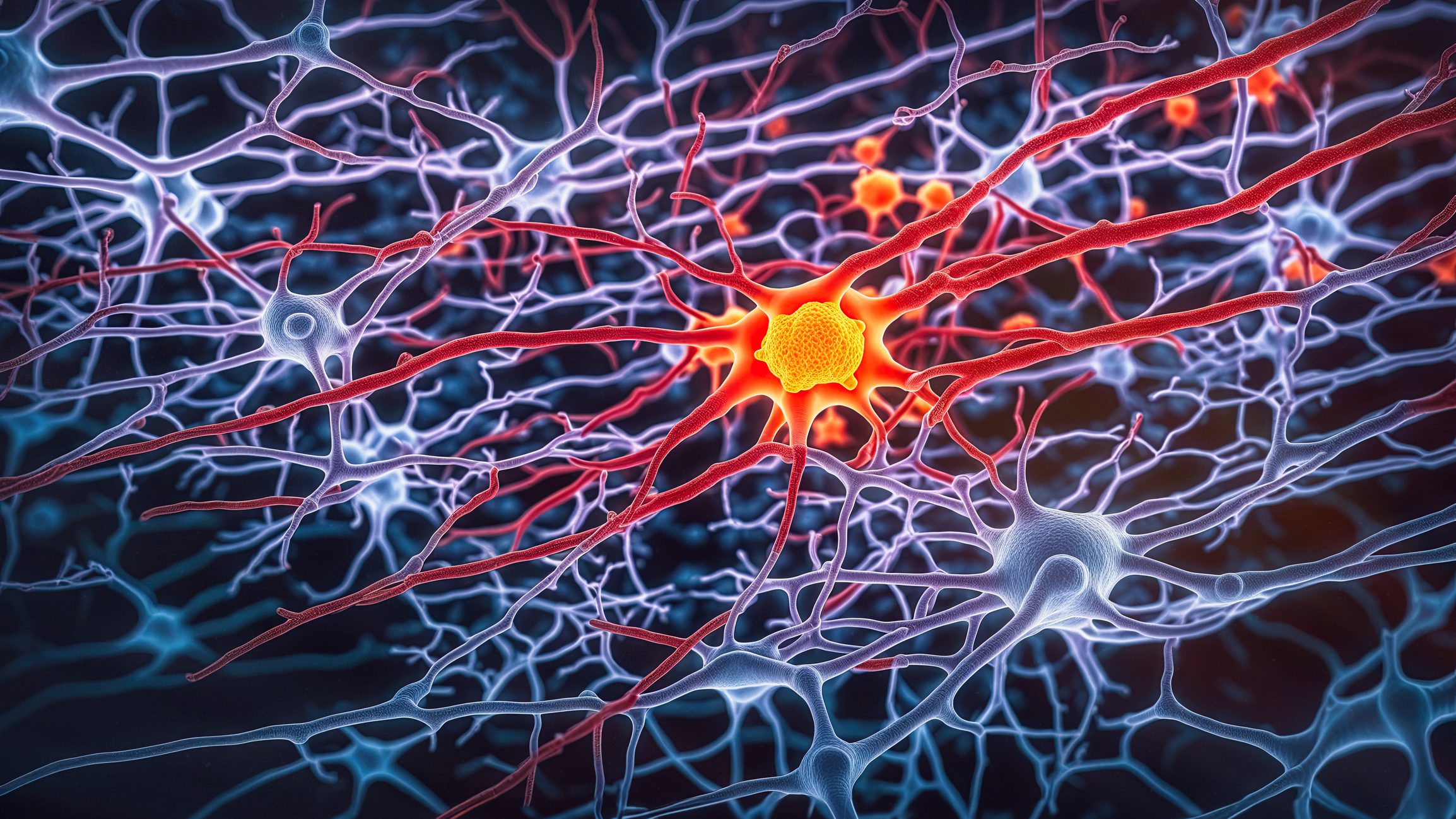According to current understanding, obesity is considered a multifactorial chronic disease. The overriding goals of treatment are to improve the general state of health and weight-associated diseases or risk factors. Lifestyle modification is crucial for weight reduction, but should be part of a multimodal therapy to prevent a yo-yo effect. The use of modern obesity medication supports weight reduction and helps to maintain the target weight.
“Obesity is a chronic multifactorial disease,” explained Prof. Dr. med. Katharina Timper, Head of the Obesity Clinic at the University Hospital Basel and Research Group Leader of the Obesity Research Unit at the Department of Biomedicine at the University of Basel [1]. The high prevalence of concomitant and secondary diseases of obesity (Overview 1) is associated with increased morbidity and mortality. In addition to the body mass index (BMI), the Edmonton Obesity Staging System (EOSS) is also used for classification [2]. The EOSS supplements anthropometric measurements to assess obesity and analyzes the patient’s state of health. This classification is based on a grading from 0 to 4, with a higher value corresponding to an increased risk of secondary diseases, cardiovascular and all-cause mortality [3].
Complex interplay of internal and external factors
(Epi)genetic and (neuro)biological factors are involved in the pathomechanisms of obesity, which are unfavourably influenced by external factors such as lifestyle and stigmatization (Fig. 1) [4]. “Obesity is not the result of too much food, but too much food is the result of obesity,” emphasized Prof. Timper [1]. Genetic and epigenetic changes lead to dysregulation of the feeling of hunger and satiety, as the speaker explained [1]. A central role is played by neurobiological processes in the brain, which control eating behavior and metabolic processes in the body in a way that is largely beyond our control [5]. “Obesity and overweight are diseases of the brain,” stated Prof. Timper [1]. Almost all genetic changes associated with obesity affect anatomical structures or biochemical processes of the brain. This explains why short-term lifestyle interventions usually do not result in long-term and sustainable weight loss, as disease-relevant biological mechanisms are not addressed. In addition, people with obesity often face stigmatization and social exclusion (box).
| The prejudice that obesity is due to laziness and a lack of willpower and self-discipline is still widespread. “These people are systematically devalued and stigmatized, not only in the context of society as a whole, but also in the healthcare sector in particular,” said Prof. Dr. Timper. “This stigmatization is not only a consequence, but also a cause of obesity,” explained the speaker. The experiences of stigmatization, which can affect various areas of life, encourage emotional eating behavior, which leads to further obesity. |
| according to [1] |
What are the dimensions of food intake?
Knowledge of the different dimensions of food intake is very important in order to better understand the disease process of obesity. The biological side – eating because you are hungry – is determined by various intestinal hormones (e.g. GLP-1). The psychological side or hedonistic food intake – i.e. eating for pleasure – is controlled by dopamine, opioid and cannabinoid receptors. The third dimension concerns the executive function – the conscious decision to eat – the lifestyle component, so to speak. However, according to the speaker [1], it is a fallacy that the latter is decisive for what, when and how we eat. This is because research findings show that the executive function is the weakest dimension of food intake, which is often overridden by the biological and psychological dimension. As an example, Prof. Timper cited a study in which slim, healthy, young men were given a high-sugar and high-fat snack every day over a period of 8 weeks. It was shown that the brain processes changed over time in such a way that the interest in healthy snacks decreased significantly [7]. This has a lot to do with the neurobiologically regulated reward system, Prof. Timper noted [1]. The mechanisms involved have not yet been clarified in detail and this is the subject of current research, but previous study findings indicate that a variety of anatomical and biochemical factors lead to hunger and satiety being disturbed.
Social devaluation leads to a vicious circle
The misconception that obesity is a result of insufficient willpower and that those affected should simply make an effort to eat less and exercise more is still widespread [8]. This can have serious consequences for those affected, as devaluation and stigmatization lead to internalization with self-reproach and feelings of guilt in the vast majority of people, which in turn encourages emotional eating as a reaction to the psychological stress that arises. This can result in further weight gain, creating a vicious circle.
An international survey published in 2021 by Puhl et al. of 13,996 overweight people in Australia, Canada, France, Germany, the UK and the USA, published in 2021, found that two thirds of respondents had already experienced weight-related stigmatization or devaluation by doctors on one or more occasions [9]. This is particularly significant, as a doctor’s consultation is actually a highly protected setting. It can lead to a massive breach of trust in doctors and in the healthcare system in general. It is important to verbalize to patients that obesity is a disease that is not self-inflicted. Empathy, empowerment and appreciation are key. “Ask your patients for permission to bring up the subject of weight,” advised the expert. This applies in particular to the primary care sector. It is essential that patients are perceived and taken seriously in the reality of their lives in the protected setting of the doctor’s visit.
Liraglutide and semaglutide support weight loss
In order to achieve a positive impact with regard to secondary diseases such as fatty liver disease, type 2 diabetes and cardiovascular risk, it is important to aim for a weight reduction of at least 10-15%. A multidisciplinary approach is practiced in the Obesity Clinic of the Department of Endocrinology, Diabetology and Metabolism at the University Hospital Basel. Treatment is carried out by a multi-professional team. Initially, the focus is on multimodal lifestyle changes with a balanced diet, behavioral therapy, psychotherapy and physical activity. However, lifestyle changes alone are not enough, as has been shown in recent decades. This is because a yo-yo effect sets in; patients gain weight again as soon as the intervention is over. We now know why this is the case: “Because weight loss leads to a change in hormone levels and a sometimes drastic drop in basal energy expenditure,” explained Prof. Timper [1]. As a result, when the calorie restriction is lifted, the weight not only increases slightly, but excessively. “This is why it is so important to combine this multimodal lifestyle change with specific obesity therapy,” the speaker explained [1]. The most important treatment options for supporting weight loss with medication are currently liraglutide (Saxenda®) and semaglutide (Wegovy®) [10]. These are GLP-1 receptor agonists, which are modeled on the body’s own hormone “glucagon-like peptide-1” (GLP-1) and increase the feeling of satiety. Liraglutide can achieve an average weight loss of around 10% and semaglutide 16%. An important aspect is that these drugs facilitate the implementation of lifestyle changes. Liraglutide is a recombinant analog of the human incretin hormone GLP-1 and is injected subcutaneously once a day [10]. The most common side effects that can occur, especially in the first few weeks of therapy, include nausea, vomiting, diarrhea and constipation. Like liraglutide, semaglutide is a GLP-1 analog with high sequence homology to the human incretin hormone, but has a longer half-life and more stable plasma levels and is injected subcutaneously once a week up to a maximum dose of 2.4 mg [10]. In the pivotal studies, 51-64% of patients with overweight or obesity achieved a reduction of ≥15% of their initial weight with semaglutide [11]. The spectrum of side effects of semaglutide largely corresponds to that of liraglutide [10].
Congress: SGAIM Spring Congress
Literature:
- Bergmann NC, et al: Semaglutide for the treatment of overweight and obesity: a review. Diabetes Obes Metab 2023; 25(1): 18-35.
- “Obesity in primary care”, Prof. Dr. med. Katharina Timper, SGAIM Spring Congress, 29-31.05.2024.
- Padwal RS, et al: Using the Edmonton obesity staging system to predict mortality in a population-representative cohort of people with overweight and obesity. CMAJ 2011; 183(14): E1059-1066.
- Kuk JL, et al: Edmonton Obesity Staging System: association with weight history and mortality risk. Appl Physiol Nutr Metab 2011; 36(4): 570-576.
- Blüher M. Obesity: global epidemiology and pathogenesis. Nat Rev Endocrinol 2019; 15(5): 288-298.
- Sharma AM, et al: Perceptions of barriers to effective obesity management in Canada: Results from the ACTION study. Clin Obes 2019; 9(5): e12329.
- Brix JM, et al: Übergewicht und Adipositas bei Erwachsenen: allgemeine Behandlungsgrundsätze und konservatives Management [Overweight and obesity in adults: general principles of treatment and conservative management]. Wien Klin Wochenschr 2023; 135(Suppl 6): 706-720.
- Thanarajah SE, et al: Habitual daily intake of a sweet and fatty snack modulates reward processing in humans. Cell Metab 2023; 35(4): 571-584.e6.
- Puhl RM, Brownell KD: Confronting and coping with weight stigma: an investigation of overweight and obese adults. Obesity (Silver Spring) 2006; 14(10): 1802-1815.
- Puhl RM, et al: The roles of experienced and internalized weight stigma in healthcare experiences: Perspectives of adults engaged in weight management across six countries. PLoS One 2021 Jun 1; 16(6):e0251566.
- Swissmedic: Medicinal product information, www.swissmedicinfo.ch,(last accessed 26.06.2024).
HAUSARZT PRAXIS 2024; 19(7): 22-23 (published on 22.7.24, ahead of print)














